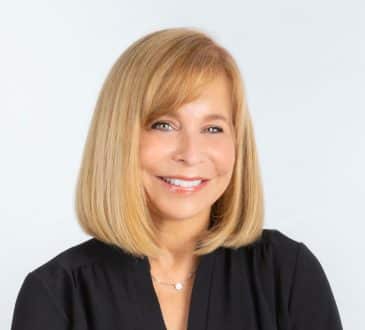After pandemic, enterprise should rethink sustainability and look to local supply chains

While the reduction in our carbon footprint has long been the eco-friendly battle cry of those campaigning to re-route supply chains to local producers, the aftermath of the COVID-19 lockdowns is laying bare the real costs of a global supply chain that continues fail at the feet of demand.
No one is feeling the pinch worse than the manufacturers and distributors who cannot produce or supply as much as they did before the pandemic. Their reputations suffer as consumers cannot access the products they once came to rely upon. Worker shortages, a lack of raw materials and backups at global ports have led to a chaotic situation that experts at financial intelligence organizations say is likely to get worse in the coming months.
However, those who have partnered with local suppliers for sustainable production are not feeling the pain quite as much as manufacturers who have relied on imported materials to produce their products. The pandemic may have exposed the weakest links in our international supply chains, but the response to this dilemma should be to reset the industry towards localizing logistical networks.
From raw materials to the finished product, sustainable manufacturing that also avoids or vastly reduces long-distance components should be viewed as a holistic practice. The next disruption is likely around the corner so avoiding a return to an inherently flawed supply chain should be the topic of focus in all factory C-Suites.
Creating a supply chain that works
Organizations that have relied on a sustainable model for stock have already built supply chains that streamline the process to reduce the risk of disruption. From purchasing raw materials that are produced closer to the manufacturing plant to reconsidering workforce training, the pandemic is forcing companies to re-think sustainable manufacturing as the preferred system.
In fact, the 2021 State of Supply Chain Sustainability (SCS) report formally puts on notice companies who ignore the sustainability of their supply chains and warns them of the perils they face in ignoring SCS. The report notes that the pandemic accelerated enterprise SCS activities or, at the very least, increased their awareness of SCS and the urgency required to repair supply networks.
Larger companies are now taking seriously the investments needed to build more local networks. The report also notes that smaller companies who aren’t yet on-board due to perceived cost increases will need the most convincing. Ambassadors of sustainable supply chain efforts will need to work with them to better understand the barriers they face in order to move to more localized efforts.
At Genera, there are clearly some components of our cost structure that prove difficult to compete with the Asian market, but where we have a big advantage is in transportation and transparency. Genera is fully integrated. We employ a large local labor force to manufacture compostable packaging products from sustainably produced fiber crops we buy from local farmers. Our competitors produce crops and pulp in one location, consume lots of energy drying the pulp so it can be transported to distant factories where it is first rehydrated then made into molded fiber products which have to be transported to shipping ports, cross oceans, and make their way to distribution centers around the U.S. before ultimately winding up in consumers’ hands. This complex logistical web makes it virtually impossible to trace imported products back to their origin.
Companies that are actively sourcing locally and integrating solid sustainability efforts into their logistical networks also benefit from a reduction in cost, as well as minimizing their risks. By sourcing domestically, producers can more easily get in touch with suppliers so that any kinks in the supply chain are more easily identified and resolved. In stark contrast to our exporting counterparts, Genera can trace any takeout container we manufacture back to the exact farm that grew the fiber that became the container.
Investments in technology
While the pandemic may have exposed the need for connected supply chain technologies across all steps in the process – from procurement to manufacturing to logistics, it is the sustainability in the use of technology that will lead to long-term changes.
Artificial intelligence and machine learning reduce error rates, decrease operational costs and optimize the flow of materials to production. Robotics and the Internet of Things assist in everything from inventory management to delivery and cloud-based solutions reduce the need for travel and paper documentation while improving efficiency.
And with the arrival of this technology comes the need for a different kind of domestic workforce that is trained to manage it.
Training and digitizing local workforces
Another outcome of current supply chain failures is enterprise’s focus on its local workforce.
While international trade agreements over the last two decades gave a cursory nod to domestic labor protection, the pandemic has shown that producing products in markets with cheaper labor costs may not save the money enterprise hoped it would in the long run.
In late 2020, when supply chain disruptions became clearer, Ernst & Young LLP conducted a survey of senior-level supply chain executives across many service sectors and found that 61% plan to reskill their workforce. Other studies have shown that manufacturing is changing with a more digitized world and efforts to drive more young people into factory work as engineers, data analytics modelers and process intelligence developers over more traditional technical roles has become a priority.
Bringing back good-paying manufacturing jobs to local economies will not only improve the dependability and sustainability of the supply chain, it’s also a boon for American workers and fosters stronger, more connected communities.
Rebuilding reputations
Supply chains consume a large amount of resources and energy and are leaving a disproportionately large carbon footprint on the planet. Localizing the sourcing of raw materials and production of goods leads to a reduction in logistical externalities and is a better way to do business.
Surveys indicate that more than 80% of consumers are more likely to buy from a company with a good reputation for sustainability and 70% support buying locally sourced goods and services.
Companies who pay well, provide a sustainable product or service and are more protected from international supply chain disruptions have the best reputations, which drive consumer confidence.
After all that the pandemic did to expose weaknesses in the current supply chain, it’s hard to consider any enterprise would want things to stay the way they are today.
Written by Dr. Kelly Tiller.
Bring the best of the CEOWORLD magazine's global journalism to audiences in the United States and around the world. - Add CEOWORLD magazine to your Google News feed.
Follow CEOWORLD magazine headlines on: Google News, LinkedIn, Twitter, and Facebook.
Copyright 2025 The CEOWORLD magazine. All rights reserved. This material (and any extract from it) must not be copied, redistributed or placed on any website, without CEOWORLD magazine' prior written consent. For media queries, please contact: info@ceoworld.biz








